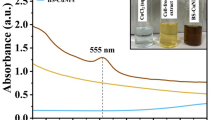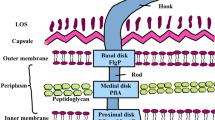Abstract
Neisseria meningitidis is a Gram-negative human-restricted pathogen that asymptomatically resides in the human respiratory tract. Meningococcal meningitis and sepsis both are caused by N. meningitidis. The bacterium must adhere to host epithelial cells in order to colonize effectively. The factors that determine the initial attachment to the host and dispersal, are not well understood. Metabolites released by the host may aid in meningococcal colonization and dissemination. Polyamines are aliphatic polycations that assist in cell survival and proliferation. The virulence properties of N. meningitidis after exposure to polyamines were investigated. Adhesion to nasopharyngeal epithelial cells increased in the presence of spermine. Also, the relative expression of adhesin, pilE increased in the presence of spermine. Further, relative expression of ctrA, ctrB and lipB was upregulated in the presence of spermidine, indicating increased capsule formation. Upregulated capsule synthesis of N. meningitidis in the presence of spermidine allows it to survive in murine macrophages. The study suggests the importance of the extracellular pool of polyamines in promoting virulence in N. meningitidis.
Similar content being viewed by others
References
Banerji, R., Kanojiya, P., Patil, A., and Saroj, S.D. 2021. Polyamines in the virulence of bacterial pathogens of respiratory tract. Mol. Oral Microbiol. 36, 1–11.
Barraud, N., Moscoso, J.A., Ghigo, J.M., and Filloux, A. 2014. Methods for studying biofilm dispersal in Pseudomonas aeruginosa. In Filloux, A. and Ramos, J.L. (eds.), Pseudomonas Methods and Protocols. Methods in Molecular Biology (Methods and Protocols), vol. 1149, pp. 643–651. Humana Press, New York, USA.
Bartley, S.N., Tzeng, Y.L., Heel, K., Lee, C.W., Mowlaboccus, S., Seemann, T., Lu, W., Lin, Y.H., Ryan, C.S., Peacock, C., et al. 2013. Attachment and invasion of Neisseria meningitidis to host cells is related to surface hydrophobicity, bacterial cell size and capsule. PLoS ONE 8, e55798.
Bartos, F., Bartos, D., Grettie, D.P., Campbell, R.A., Marton, L.J., Smith, R.G. and Daves, G.D.Jr. 1977. Polyamine levels in normal human serum. Comparison of analytical methods. Biochem. Biophys. Res. Commun. 75, 915–919.
Breakwell, D.P., Moyes, R.B., and Reynolds, J. 2009. Differential staining of bacteria: capsule stain. Curr. Protoc. Microbiol. 15, A.3I.1–A.3I.4. doi: https://doi.org/10.1002/9780471729259.mca03is15.
Clark, S.E. 2020. Commensal bacteria in the upper respiratory tract regulate susceptibility to infection. Curr. Opin. Immunol. 66, 42–49.
Coffey, B.M. and Anderson, G.G. 2014. Biofilm formation in the 96-well microtiter plate. In Filloux, A. and Ramos, J.L. (eds.), Pseudomonas Methods and Protocols. Methods in Molecular Biology (Methods and Protocols), vol. 1149, pp. 631–641. Humana Press, New York, USA.
Costerton, J.W., Stewart, P.S., and Greenberg, E.P. 1999. Bacterial biofilms: a common cause of persistent infections. Science 284, 1318–1322.
Engman, J., Negrea, A., Sigurlásdóttir, S., Geörg, M., Eriksson, J., Eriksson, O.S., Kuwae, A., Sjölinder, H., and Jonsson, A.B. 2016. Neisseria meningitidis polynucleotide phosphorylase affects aggregation, adhesion, and virulence. Infect. Immun. 84, 1501–1513.
Exley, R.M., Shaw, J., Mowe, E., Sun, Y.H., West, N.P., Williamson, M., Botto, M., Smith, H., and Tang, C.M. 2005. Available carbon source influences the resistance of Neisseria meningitidis against complement. Exp. Med. 201, 1637–1645.
Fair, R.J. and Tor, Y. 2014. Antibiotics and bacterial resistance in the 21st century. Perspect. Medicin. Chem. 6, 25–64.
Kwon, D.H. and Lu, C.D. 2007. Polyamine effects on antibiotic susceptibility in bacteria. Antimicrob. Agents Chemother. 51, 2070–2077.
Ofek, I., Whitnack, E., and Beachey, E.H. 1983. Hydrophobic interactions of group A streptococci with hexadecane droplets. J. Bacteriol. 154, 139–145.
Perez-Leal, O. and Merali, S. 2012. Regulation of polyamine metabolism by translational control. Amino Acids 42, 611–617.
Rai, A.N., Thornton, J.A., Stokes, J., Sunesara, I., Swiatlo, E., and Nanduri, B. 2016. Polyamine transporter in Streptococcus pneumoniae is essential for evading early innate immune responses in pneumococcal pneumonia. Sci. Rep. 6, 26964.
Rouphael, N.G. and Stephens, D.S. 2012. Neisseria meningitidis: biology, microbiology, and epidemiology. Methods Mol. Biol. 799, 1–20.
Shah, P. and Swiatlo, E. 2008. A multifaceted role for polyamines in bacterial pathogens. Mol. Microbiol. 68, 4–16.
Sigurlásdóttir, S., Engman, J., Eriksson, O.S., Saroj, S.D., Zguna, N., Lloris-Garcerá, P., Ilag, L.L., and Jonsson, A.B. 2017. Host cell-derived lactate functions as an effector molecule in Neisseria meningitidis microcolony dispersal. PLoS Pathog. 13, e1006251.
Sigurlásdóttir, S., Lidberg, K., Zuo, F., Newcombe, J., McFadden, J., and Jonsson, A.B. 2021. Lactate-induced dispersal of Neisseria meningitidis microcolonies is mediated by changes in cell density and pilus retraction and is influenced by temperature change. Infect. Immun. 89, e0029621.
Sigurlásdóttir, S., Saroj, S.D., Eriksson, O.S., Eriksson, J., and Jonsson, A.B. 2018. Quantification of Neisseria meningitidis adherence to human epithelial cells by colony counting. Bio Protoc. 8, e2709.
Varki, A. 1997. Sialic acids as ligands in recognition phenomena. FASEB J. 11, 248–255.
Acknowledgements
PK is supported by the junior research fellowship program of the Symbiosis International (Deemed University). The work was supported by the Ramalingaswami fellowship program of Department of Biotechnology, India under grant BT/RLF/Re-entry/41/2015.
Author information
Authors and Affiliations
Corresponding author
Additional information
Conflict of Interest
The authors report no conflict of interest.
Electronic supplementary material
Rights and permissions
About this article
Cite this article
Kanojiya, P., Joshi, R. & Saroj, S.D. Availability of polyamines affects virulence and survival of Neisseria meningitidis. J Microbiol. 60, 640–648 (2022). https://doi.org/10.1007/s12275-022-1589-y
Received:
Revised:
Accepted:
Published:
Issue Date:
DOI: https://doi.org/10.1007/s12275-022-1589-y




